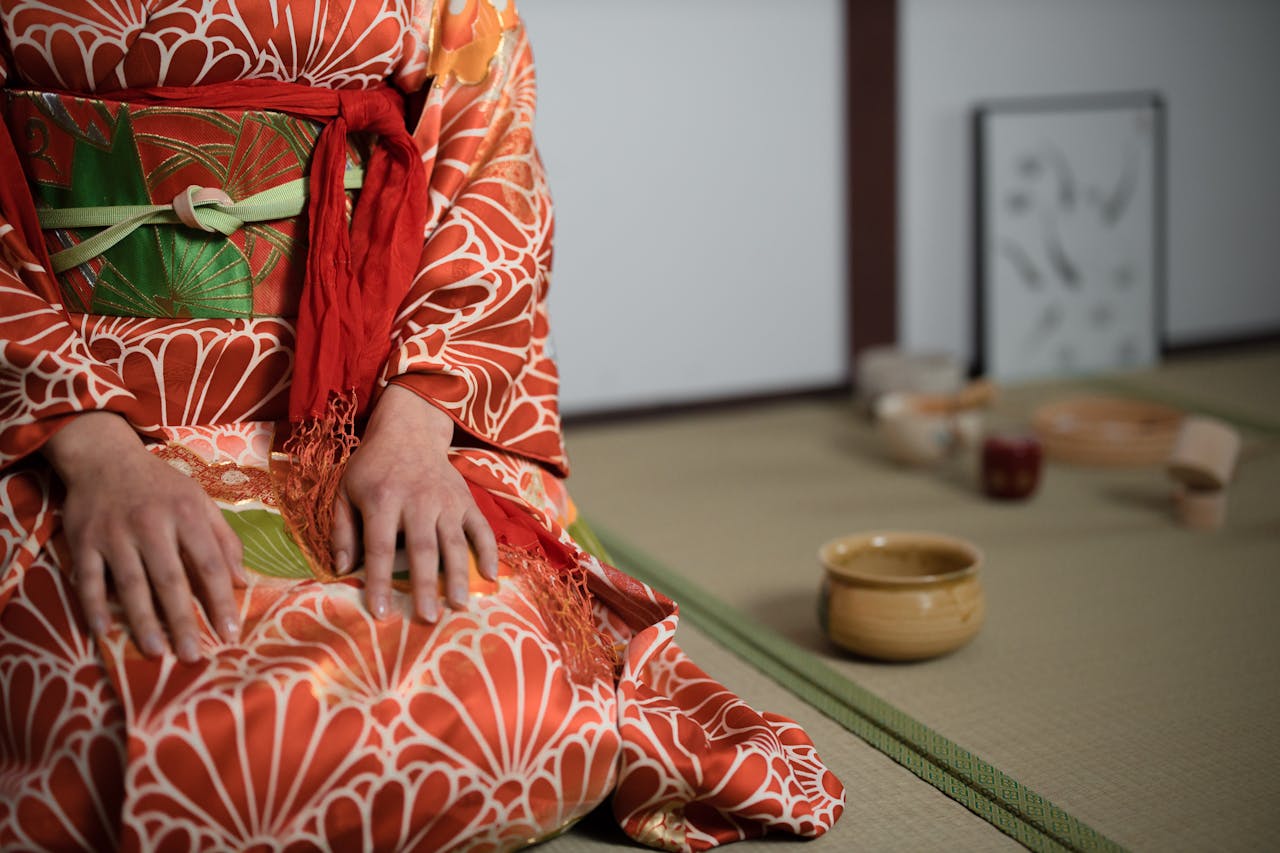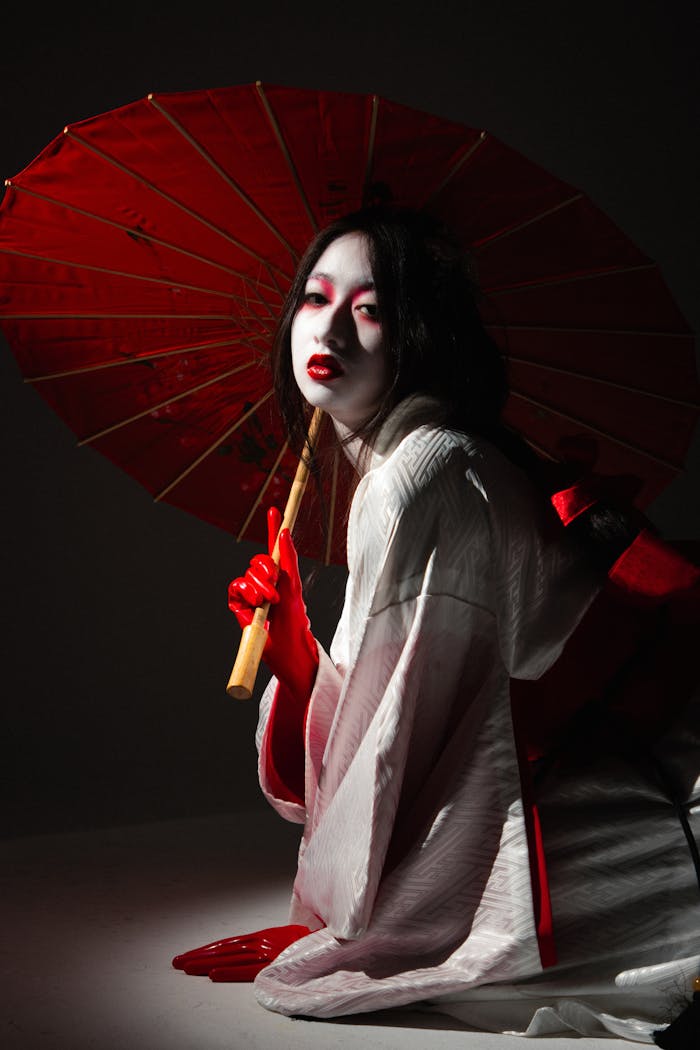In the fast-paced world of today, where distractions are endless and the pace of life never seems to slow down, the Japanese tea ceremony (chanoyu) offers a much-needed respite. It is not simply a way to drink tea, but a sacred ritual—an invitation to experience mindfulness, to slow down, and to be fully present in each fleeting moment. Rooted in centuries of tradition, the tea ceremony embodies the heart of Japanese culture, where harmony, respect, and beauty flourish in the most understated forms.
A Glimpse into the Past: The Origins of the Tea Ceremony
The story of the Japanese tea ceremony begins over a thousand years ago during the Heian period (794-1185), when Buddhist monks brought tea from China to Japan. Initially used for medicinal and spiritual purposes, it was not until the 15th century that the art of preparing and drinking tea evolved into the ritual we recognize today.
The tea ceremony as we know it was shaped by tea masters such as Sen no Rikyū, who is often regarded as the true founder of the Way of Tea. Rikyū’s philosophy centered around four fundamental principles—wa (harmony), kei (respect), sei (purity), and jaku (tranquility)—which would become the guiding values of the ceremony. His teachings emphasize that true beauty lies in simplicity and humility, encouraging practitioners to find peace in even the smallest gestures.
The Essence of the Tea Ceremony: More Than Just Tea
At first glance, the Japanese tea ceremony may appear to be a series of meticulously choreographed actions centered around the preparation and sharing of tea. But delve a little deeper, and you’ll discover a rich, spiritual practice. Each movement, no matter how small, holds profound significance. The way the tea is prepared, the sound of the bamboo whisk in motion, the gentle exchange of cups—all of it is imbued with a quiet mindfulness that transcends the physical act.
1. Harmony (Wa)
The core principle of wa is harmony, a balance that exists between the host, the guests, the utensils, and the environment. Every element of the ceremony is aligned to create a peaceful and tranquil atmosphere. The way the host handles the tea utensils, the calm of the room, and the reverence shared by everyone present—everything is in harmony. It is a shared experience that invites all participants to join in a moment of quiet unity.
2. Respect (Kei)
Respect, or kei, is woven into every aspect of the tea ceremony. From the careful way the tea bowl is presented to the guests, to the reverence with which each guest receives their tea, every action speaks of deep consideration. It is a practice that fosters not only respect for the ceremony itself but also for the people around you. In this sacred space, there is a mutual understanding of the dignity and worth of all participants.
3. Purity (Sei)
Purity goes beyond cleanliness—it is about cleansing the mind, spirit, and surroundings. The preparation of the tea is a meditative process, a purification of the mind and body. As the host carefully cleans the utensils and prepares the space, it is a moment of reflection, washing away distractions and inviting clarity. Each action is intentional, designed to focus the mind on the present moment.
4. Tranquility (Jaku)
The final principle, jaku, is tranquility. It’s the calm that washes over you as you sip your tea, the serenity that envelops the room as guests quietly contemplate the experience. This tranquility is a shared peace—a moment outside of time where the outside world is forgotten, and only the ritual and its beauty remain. It’s an invitation to experience stillness and to embrace the fleeting beauty of the present.
The Ritual of the Tea Ceremony: A Dance of Grace and Precision
The Japanese tea ceremony, though steeped in history, is an art form that continues to be practiced with the utmost reverence today. Each step in the ceremony is a delicate performance of grace, precision, and ritual. The ceremony can vary, but the process usually follows a similar pattern that emphasizes mindfulness and intention.
1. Preparing the Space: Creating a Sacred Atmosphere
The tea ceremony takes place in a chashitsu—a simple, intimate tea room. The room is meticulously prepared, each corner reflecting the principles of Japanese aesthetics: minimalistic, natural, and serene. Flowers in a vase, a scroll with calligraphy on the wall, and the subtle fragrance of incense all contribute to a calm, reflective atmosphere. The host cleans the utensils with great care, signaling that the ritual is about to begin.
2. The Utensils: Simple Tools, Profound Meaning
The tools of the tea ceremony are simple, yet their significance is profound. The tea bowl (chawan), bamboo whisk (chasen), and bamboo scoop (chashaku) are carefully selected, not just for their functionality, but for their beauty and connection to the natural world. Each utensil is handled with reverence, its movements reflecting the host’s dedication to the practice.
3. Making the Tea: A Moment of Mindfulness
The preparation of the tea is an art unto itself. The host measures out powdered matcha tea with a bamboo scoop, adding just the right amount to the tea bowl. Then, with a bamboo whisk, the host briskly mixes the tea with hot water in a swirling motion, creating a frothy, vibrant green liquid. This process is performed with mindful intention, where each motion is deliberate, creating not just tea, but an experience. The aroma, color, and texture of the tea are all carefully considered in this brief, yet meaningful act.
4. Serving the Tea: An Act of Respect
Once the tea is prepared, the host presents it to the guest with both hands, a gesture of humility and respect. The guest, in turn, takes the bowl with both hands, appreciating the beauty of the bowl before drinking. The tea is sipped slowly, allowing the warmth and the flavors to be fully appreciated. Afterward, the bowl is passed back to the host, and the ceremony continues, with each guest receiving the same attention and care.
The Tea Ceremony Today: A Timeless Tradition
While the world has changed dramatically, the Japanese tea ceremony remains a cherished practice. It continues to be passed down through generations, practiced in tea houses, schools, and temples throughout Japan. In recent years, it has gained international recognition, as people around the world seek to reconnect with the deep, grounding rituals of the past.
The tea ceremony isn’t simply about drinking tea—it’s an invitation to pause, reflect, and embrace the beauty of simplicity. It is a quiet protest against the fast pace of modern life, offering a sanctuary where time seems to stand still.
Final Thoughts: A Sip of Peace
The Japanese tea ceremony is a profound meditation in motion, a celebration of the subtle beauty that surrounds us. It reminds us that beauty is not always loud or extravagant; often, it is found in the quiet, humble moments that we tend to overlook. When you partake in the tea ceremony, you are not just drinking tea—you are embracing a tradition that honors harmony, respect, purity, and tranquility. In a world that often moves too fast, the tea ceremony is a precious reminder to slow down, connect with the present, and find peace in simplicity.
If you ever have the opportunity to participate in a tea ceremony, take a moment to fully experience it. Savor each sip, embrace the stillness, and allow the wisdom of this timeless tradition to quiet your mind and restore your spirit.


